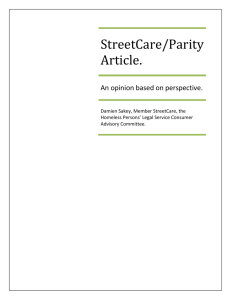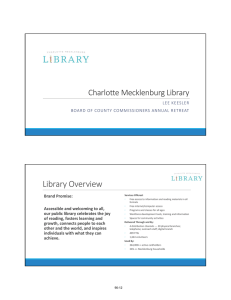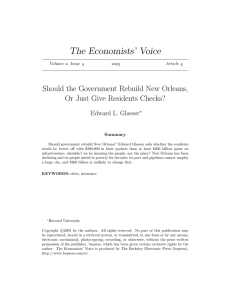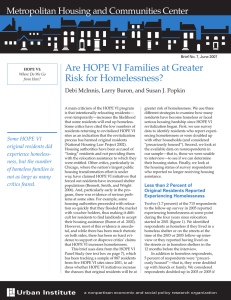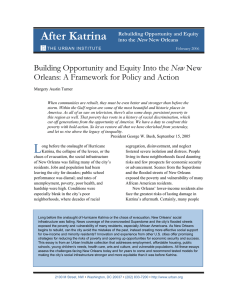Urban Planning and the Contradictions of Sustainable Development
advertisement
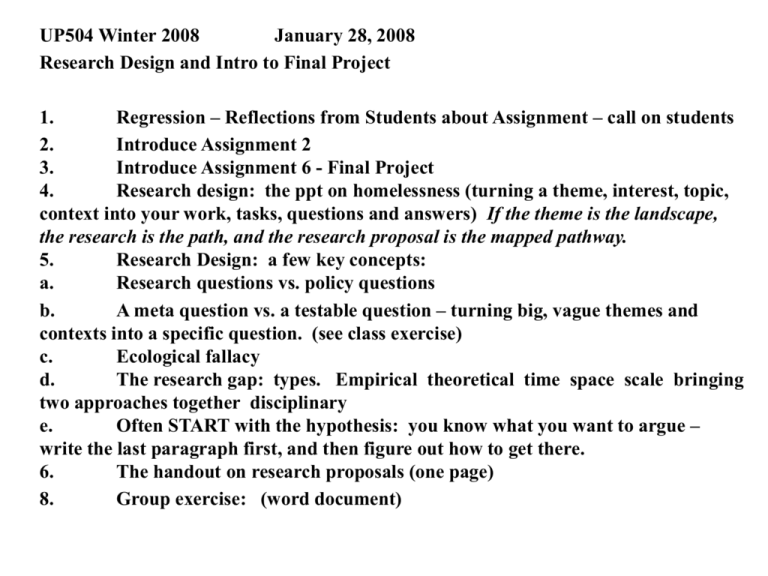
UP504 Winter 2008 January 28, 2008 Research Design and Intro to Final Project 1. Regression – Reflections from Students about Assignment – call on students 2. Introduce Assignment 2 3. Introduce Assignment 6 - Final Project 4. Research design: the ppt on homelessness (turning a theme, interest, topic, context into your work, tasks, questions and answers) If the theme is the landscape, the research is the path, and the research proposal is the mapped pathway. 5. Research Design: a few key concepts: a. Research questions vs. policy questions b. A meta question vs. a testable question – turning big, vague themes and contexts into a specific question. (see class exercise) c. Ecological fallacy d. The research gap: types. Empirical theoretical time space scale bringing two approaches together disciplinary e. Often START with the hypothesis: you know what you want to argue – write the last paragraph first, and then figure out how to get there. 6. The handout on research proposals (one page) 8. Group exercise: (word document) How do the various elements of the class come together to address a planning problem? An example: Is there really more homelessness in NYC than before, and if so, why? Images from Accunet AP Media Archive http://ap.accuweather.com/apphoto/index.htm How do you identify a clear research question, a policy question, and a methodology to answer these questions? What data do you need? How do you get it? Survey or secondary source? Can you trust the data? What results do you expect? And finally: What will you do with the results? (AT LEAST) TWO BIG CHALLENGES: 1. How do you define “homelessness”? 2. Who do you ask to find out who matches your criterion? Let us say that you observe more homeless than before: 1. Questions a. Are there more homeless than before? (research question: descriptive) b. Why? RQ: causal c. What can be done to lower this? (policy options and impacts: evaluation) d. What should be done? (normative/politics) 2. Hypotheses a. yes b. unemployment, housing market, drugs, deinstitutionalization, etc. c. build housing, kick them out, institutionalization, shelters, etc. d. ? 3. Literature Review Purposes: A. What do we already know about the questions? (results of prior research studies) Do these answers apply to our case? B. What methodologies did these previous studies use? 4. Time and Space Frame Time: what years Space: just NYC, or elsewhere? that is a local or national problem? 5. Model (a conceptual way to visualize hypotheses in a causal pattern) Derive variables from 2b (causal question). Draw a flow chart if useful. 6. Data Needed economic variables, housing data, institutionalization data, drugs, mobility/migration, homelessness elsewhere, climate, etc. 7. How to gather data Primary vs. secondary data survey (how? sample; questionnaire, phone vs. mail, in person) whom to interview/ask? homeless? social services? police? families? how to trust your data. case studies vs. big data sets? 8. How to evaluate data? descriptive vs. inferential statistics multiple regression (and path analysis) evaluation demographic analysis path and trend analysis case study analysis Finally: 9. How to present and communicate data? writing graphics/charts Web based vs. printed vs. oral, etc. UP504 (Winter 2008): In Class Exercise: Rapid “Round Robin” Research Proposals (R4P) Instructions: fill in the first blank question on the page and then pass the sheet to the next student. The result: Parts 1-5 will be filled in by five different students. For each, write a concise & precise single sentence. The person who fills in Part 5 will retain the sheet of paper and be ready to read to the class. 1. 2. 3. 4. 5. Research question Hypothesis Unit of analysis Methodology critique “Escalating rates of obesity are a national health concern. Nearly two-thirds of the American population is overweight or obese, and physical inactivity is responsible for an estimated 200,000 deaths each year. More alarming is the surge of obesity among children: There are nearly three times as many overweight children and adolescents as there were 20 years ago. While a complex range of factors contributes to the epidemic of obesity, increasing attention is turning to how the places we live, work and play affect public health and our ability to be physically active. From elevators and drive-thru restaurants to cul-de-sac suburbs and strip malls, opportunities for routine physical activity have been steadily engineered out of many parts of American life.” From: Robert Wood Johnson Foundation: Active Living Network: “About” http://www.activeliving.org/about Michigan may be currently suffering from woes in the auto industry and other manufacturing sectors, with high unemployment and high net outmigration. However, the dangers of global climate change may represent a silver lining for the state: rising sea levels, rising temperatures and water shortages may haunt the currently booming Sunbelt, but not Michigan. A resurgent Michigan (with lots of fresh water) can welcome refugees from the coming environmental crises in the rest of the nation. “Since the widespread adoption of municipal zoning in the United States in the early twentieth century, there has been an expansion in the character and scope of state and local land controls and an increasing recognition that land use regulation significantly infringes on private property rights. The nature of land use regulation has evolved beyond the common law, nuisance-based tradition that characterized the first century after the nation’s founding. This nuisance-based approach was primarily focused on preventing harm to the property rights of others and giving property owners wide latitude in determining the best use of their land. By contrast, contemporary land use regulation often uses public policy to mandate the private provision of amenities that benefit the community-at-large. As the regulatory scheme influencing local land use has grown more prescriptive and restrictive, there has been an increasing curtailment of private property rights. Landowners in many communities nationwide have been restricted in their ability to use their land in the ways that they had intended when they purchased their property, dramatically reducing their property’s value and imposing an economic hardship on them.” Leonard C. Gilroy, AICP. April 2006. Statewide Regulatory Takings Reform: Exporting Oregon’s Measure 37 To Other States. Reason Foundation. http://www.reason.org/ps343.pdf “Throughout the 20th century, America's real economic edge came from our country's legacy as an open and inclusive country. What truly powered American economic growth and our incredible leads in software and biotechnology is not our great stocks of raw materials, our huge market, or even our efficient factories. It has been our ability to attract the best and the brightest, the most hardworking, creative, and entrepreneurial people from around the world. Now that edge is eroding. Part of the problem lies in our increasingly restrictive immigration policy, which makes it harder for top scientific, entrepreneurial, and cultural talent to get into the country. An even greater problem is that America is seen as a less open and tolerant country than ever before - a place where religion and politics have become too closely intertwined. This affects everything from the kinds of research our government supports to our declining investments in arts and culture - and now even the way private companies view gay rights.” Richard Florida, “Tolerance Grows the Economy” Philadelphia Inquirer (May 25 2005) http://creativeclass.com/rfcgdb/articles/Tolerance%20grows%20the%20econo my.pdf “New Orleans’ decline suggests that spending huge sums betting on the future of the city makes little sense. Perhaps there are externalities or coordination failures that argue for rebuilding, but they do not immediately come to mind. Most sensible theories about externalities suggest that giving checks to impacted residents, who then will move to Houston or Atlanta or Las Vegas, will actually reduce the negative spillovers from dysfunctional neighborhoods—not increase them. None of this means, of course, that we shouldn’t rebuild New Orleans’ port or its pipelines. But rebuilding this basic infrastructure doesn’t mean rebuilding the entire city, and it doesn’t necessarily require federal funding. …. One of the biggest problems of urban decline is how to help those residents caught in a declining city. Perhaps, if significant funds are given to New Orleans residents to help them start life anew in some more vibrant city, then there will be a silver lining to Katrina after all.” -- Edward L. Glaeser, “Should the Government Rebuild New Orleans, Or Just Give Residents Checks?” The Economists’ Voice. Vol. 2 (4) (2005).







